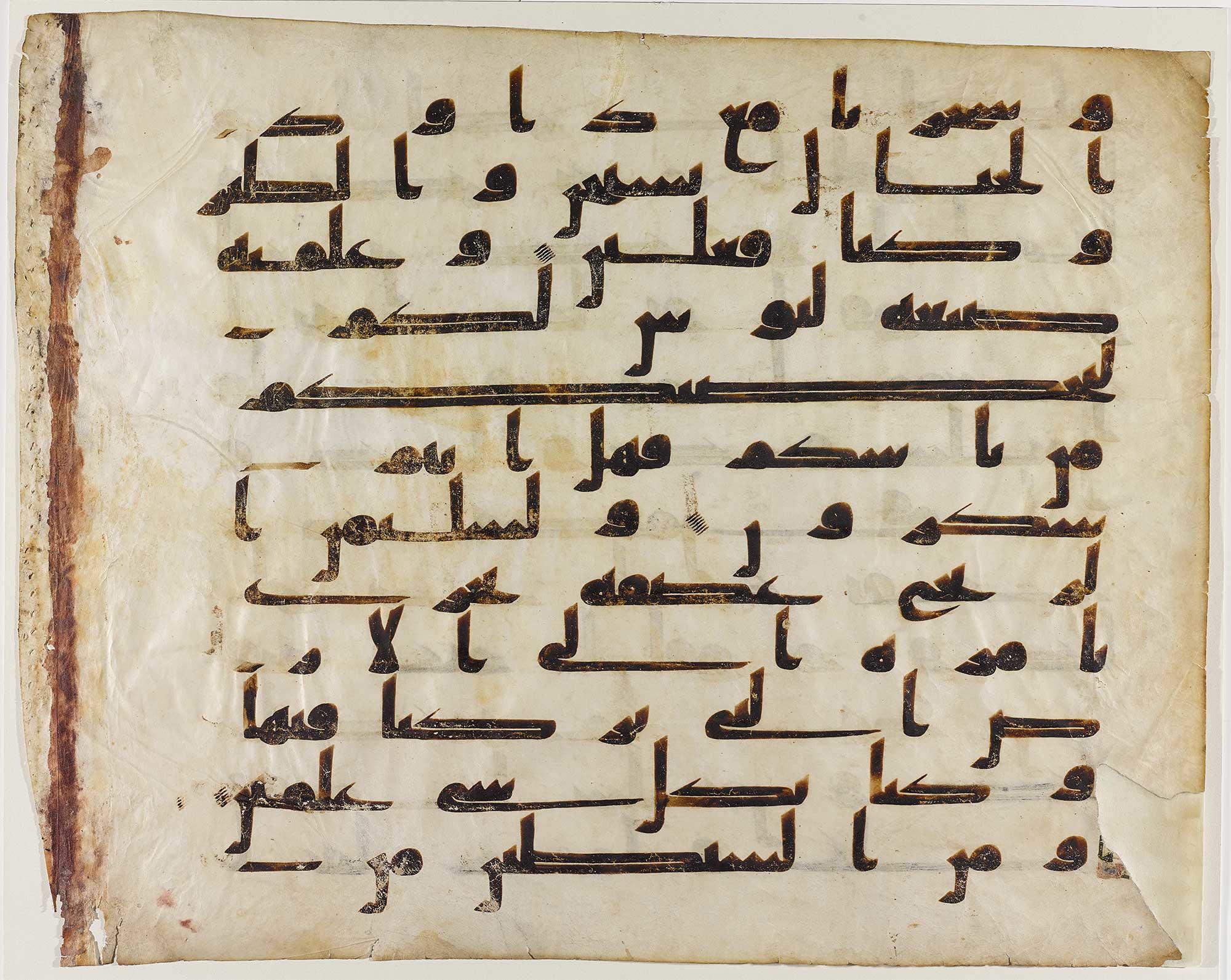Click on the image to zoom
Qur’an Folio (Q21: 76–82)
- Accession Number:AKM475
- Place:North Africa
- Dimensions:58.5 x 71.5 cm
- Date:8th century
- Materials and Technique:Ink on parchment
With the spread of Islam out of Arabia, Muslim rulers sent copies of the Qur’an to new urban centres of Muslim congregation. This gesture was meant as a symbolic reference to the caliph’s role as the custodian of faith, as well as to impress the receivers with the beauty and monumentality of these Qur’ans. Here, the text appears quite simple and unadorned. The Kufic script is evenly spaced using horizontal elongation of letters (mashq) and dashes at the end of the line (on the left) to achieve a justified text block. Indeed, the whole of the fifth line is a single word. What would have been most impressive for the eighth-century community to which this Qur’an was sent, however, is the fairly large size of the parchment on which it is copied and the number of its folios. This monumental Qur’an, most of which is now in Tashkent, Uzbekistan, was probably one of the most expensive to be produced in the second half of the eighth century.
Note: This online resource is reviewed and updated on an ongoing basis. We are committed to improving this information and will revise and update knowledge about this object as it becomes available.


